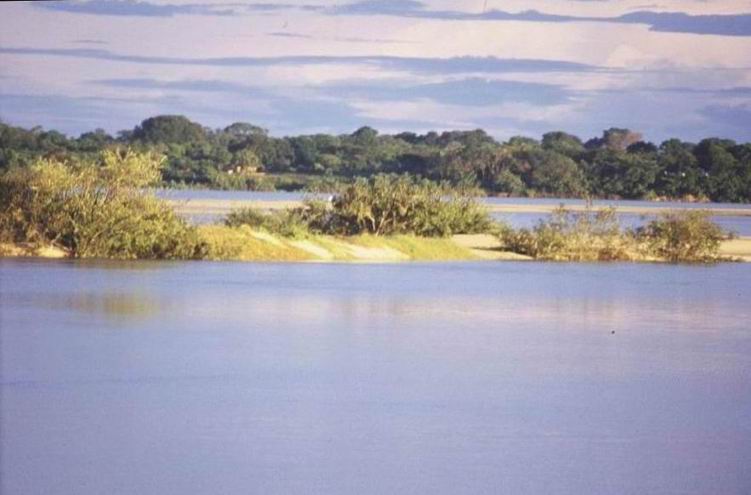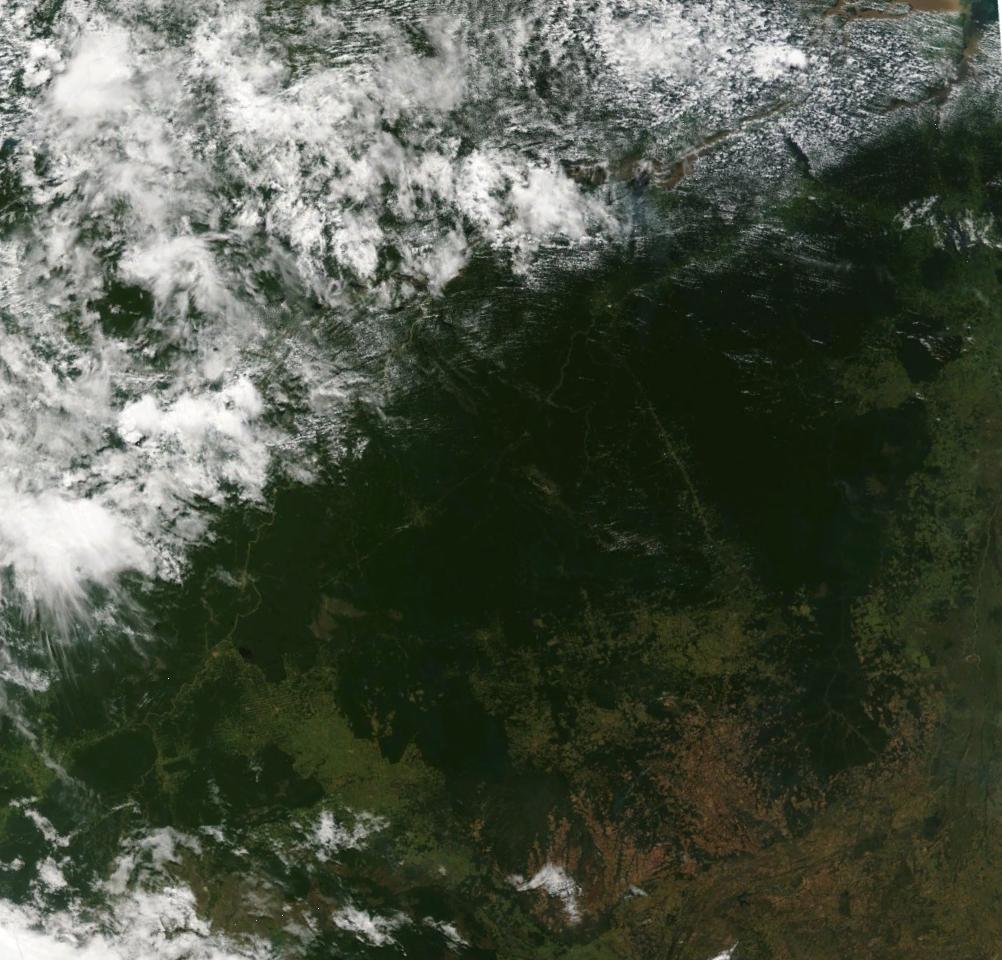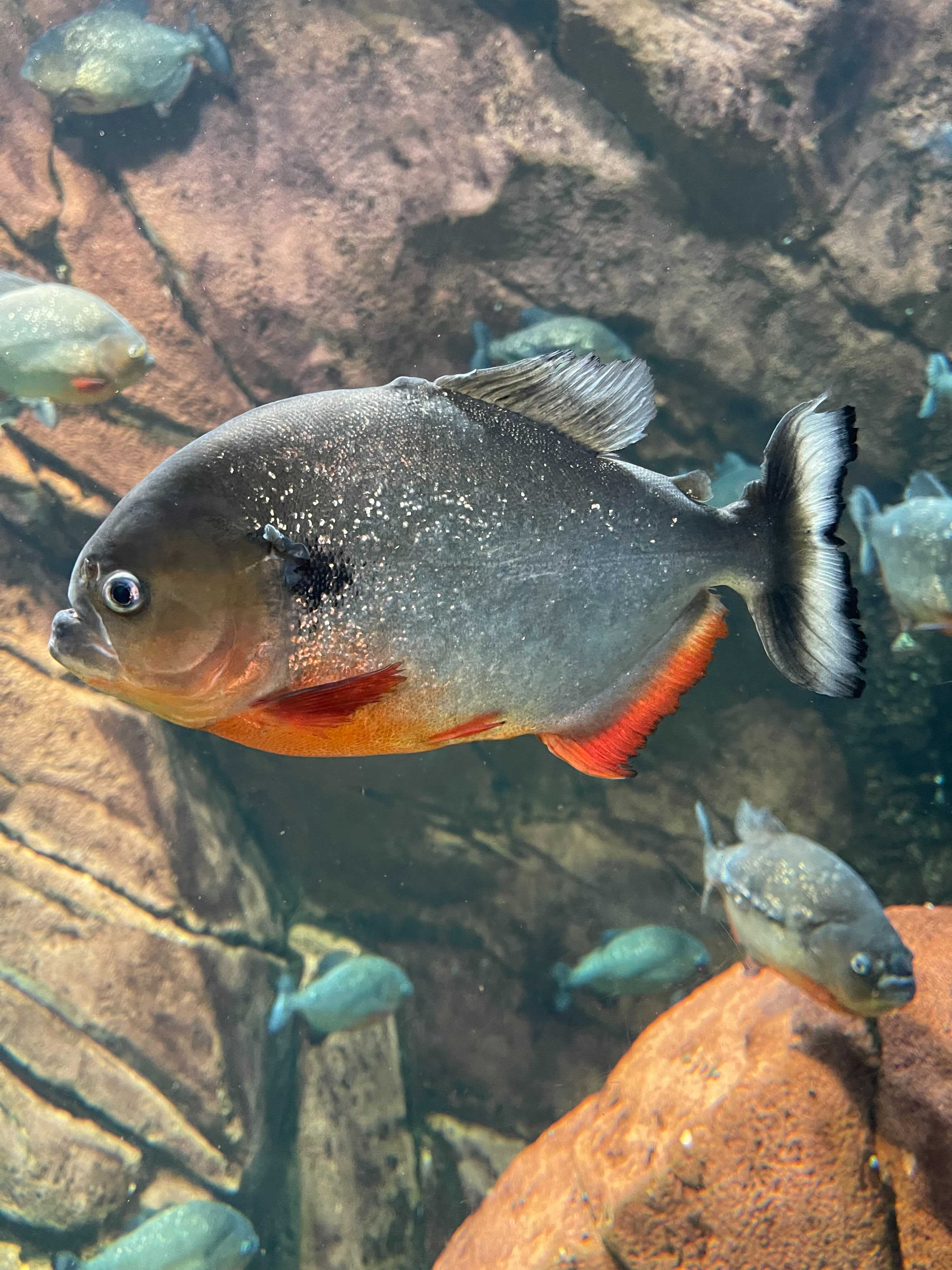|
Cantão
Cantão is a tropical forest ecosystem located in the central Araguaia river basin, the southeastern edge of the Amazon biome, in the Brazilian state of Tocantins. It is one of the biologically richest areas of the eastern Amazon, with over 700 species of birds, nearly 300 species of fish (more than in all of Europe), and large populations of endangered species such as the giant otter and the black cayman. About 90% of the Cantão ecosystem is protected within Cantão State Park. Ecological importance Due to its geographical location and topography, the Cantão ecosystem combines several unique features that contribute to its high biodiversity and productivity: *It is located at the ecotone between the cerrado and Amazon biomes of Brazil. The cerrado has the highest biodiversity of all the world's savannas, and the Amazon has the highest rainforest diversity. At the Cantão region, this ecotone is particularly sharp, resulting in species from both biomes coexisting within a ... [...More Info...] [...Related Items...] OR: [Wikipedia] [Google] [Baidu] |
Cantão State Park
The Cantão State Park ( pt, Parque Estadual do Cantão) is a state park in the state of Tocantins, Brazil. It protects the Cantão wetlands, an area of igapó flooded forest in the ecotone where the Amazon rainforest merges into the cerrado. Location The Cantão State Park is located in the municipality of Pium, Tocantins. It has an area of . The park is bounded to the west by the Araguaia River, which forms the border with the state of Pará. The Javaés River separates the state park from the Araguaia National Park to the south. It is bounded by the Ilha do Bananal / Cantão Environmental Protection Area to the east. The park would be in the proposed South Amazon Ecotones Ecological Corridor. History The Cantão State Park was created by state law 996 of 14 July 1998 with an area of . The primary purpose is protecting fauna, flora and natural resources with tourism potential to ensure their rational, sustainable use compatible with preserving the local ecosystems. The ... [...More Info...] [...Related Items...] OR: [Wikipedia] [Google] [Baidu] |
Giant Otter
The giant otter or giant river otter (''Pteronura brasiliensis'') is a South American carnivorous mammal. It is the longest member of the weasel family, Mustelidae, a globally successful group of predators, reaching up to . Atypical of mustelids, the giant otter is a social species, with family groups typically supporting three to eight members. The groups are centered on a dominant breeding pair and are extremely cohesive and cooperative. Although generally peaceful, the species is territorial, and aggression has been observed between groups. The giant otter is diurnal, being active exclusively during daylight hours. It is the noisiest otter species, and distinct vocalizations have been documented that indicate alarm, aggression, and reassurance. The giant otter ranges across north-central South America; it lives mostly in and along the Amazon River and in the Pantanal. Its distribution has been greatly reduced and is now discontinuous. Decades of poaching for its velvety ... [...More Info...] [...Related Items...] OR: [Wikipedia] [Google] [Baidu] |
Araguaia River
The Araguaia River ( pt, Rio Araguaia , Karajá: ♂ ''Berohokỹ'' eɾohoˈkə̃ ♀ ''Bèrakuhukỹ'' ɛɾakuhuˈkə̃ is one of the major rivers of Brazil though it is almost equal in volume at its confluence with the Tocantins. It has a total length of approximately 2,627 km. Geography The Araguaia River comes from Goiás-Mato Grosso south borders. From there it flows northeast to a junction with the Tocantins near the town of São João. Along its course, the river forms the border between the states of Goiás, Mato Grosso, Tocantins and Pará. Roughly in the middle of its course the Araguaia splits into two forks (with the western one retaining the name Araguaia and the eastern one being called the Javaés River). These later reunite, forming the Ilha do Bananal, the world's largest river island. The vein of the Javaés forms a broad inland where it pours back into the main Araguaia, a 100,000 hectare expanse of igapós or flooded forest, blackwater river channels ... [...More Info...] [...Related Items...] OR: [Wikipedia] [Google] [Baidu] |
Tocantins
Tocantins () is one of the 26 states of Brazil. It is the newest state, formed in 1988 and encompassing what had formerly been the northern two-fifths of the state of Goiás. Tocantins covers and had an estimated population of 1,496,880 in 2014. Construction of its capital, Palmas, began in 1989; most of the other cities in the state date to the Portuguese colonial period. With the exception of Araguaína, there are few other cities with a significant population in the state. The government has invested in a new capital, a major hydropower dam, railroads and related infrastructure to develop this primarily agricultural area. The state has 0.75% of the Brazilian population and is responsible for 0.5% of the Brazilian GDP. Tocantins has attracted hundreds of thousands of new residents, primarily to Palmas. It is building on its hydropower resources. The Araguaia and Tocantins rivers drain the largest watershed that lies entirely inside Brazilian territory. The Rio Tocanti ... [...More Info...] [...Related Items...] OR: [Wikipedia] [Google] [Baidu] |
Igapó
Igapó (, from Old Tupi: "root forest") is a word used in Brazil for blackwater-flooded forests in the Amazon biome. These forests and similar swamp forests are seasonally inundated with freshwater. They typically occur along the lower reaches of rivers and around freshwater lakes. Freshwater swamp forests are found in a range of climate zones, from boreal through temperate and subtropical to tropical. In the Amazon Basin of Brazil, a seasonally whitewater-flooded forest is known as a várzea, which is similar to igapó in many regards; the key difference between the two habitats is in the type of water that floods the forest. Characteristics Igapó is primarily characterized by seasonal inundation caused by abundant rainfall; in some areas, trees can be submerged for up to 6 months of the year. These ecosystems are relatively open and feature over 30% canopy cover with an average canopy height ranging from 20–25 m; sparse measurements of trees can reach 33–36 m. Tree compos ... [...More Info...] [...Related Items...] OR: [Wikipedia] [Google] [Baidu] |
Lago Grande
__NOTOC__ Lago, which means "lake" in Italian, Portuguese, Spanish and Galician, may refer to: Places *Lago, Calabria, a ''comune'' in the Province of Cosenza, Italy *Lago, Mexico, a municipality zone in the State of Mexico *Lago District, a ''distrito'' in Niassa Province, Mozambique *Lago, Portugal, a ''freguesia'' in the District of Braga *Lago, Asturias, a ''parroquia'' in the ''municipio'' of Allande, Spain *Lago, Texas, a census-designated place *Lagos, Nigeria, the largest city in Nigeria People *Anders Lago, Swedish politician *Ângela Lago (1945–2017), Brazilian children's writer and illustrator *Antonio Lago, Venice-born French motor vehicle manufacturer *Fábio Lago, Brazilian actor *Nais Lago, Italian actress *Virginia Lago (born 1946), Argentine actress Other uses *Lago (Madrid Metro), a station on Line 5 *Talbot-Lago, a type of car *''Lago'', a fictional western town depicted in the film, ''High Plains Drifter ''High Plains Drifter'' is a 1973 American Wes ... [...More Info...] [...Related Items...] OR: [Wikipedia] [Google] [Baidu] |
Coati
Coatis, also known as coatimundis (), are members of the family Procyonidae in the genera '' Nasua'' and '' Nasuella''. They are diurnal mammals native to South America, Central America, Mexico, and the southwestern United States. The name "coatimundi" comes from the Tupian languages of Brazil, where it means "lone coati". Locally in Belize, the coati is known as "quash". Physical characteristics Adult coatis measure from head to the base of the tail, which can be as long as their bodies. Coatis are about tall at the shoulder and weigh between , about the size of a large house cat. Males can become almost twice as large as females and have large, sharp canine teeth. The measurements above relate to the white-nosed and South America coatis. The two mountain coatis are smaller. All coatis share a slender head with an elongated, flexible, slightly upward-turned nose, small ears, dark feet, and a long, non-prehensile tail used for balance and signaling. Ring-tailed coatis ... [...More Info...] [...Related Items...] OR: [Wikipedia] [Google] [Baidu] |
Piranha
A piranha or piraña (, , or ; or , ) is one of a number of freshwater fish in the family Serrasalmidae, or the subfamily Serrasalminae within the tetra family, Characidae in order Characiformes. These fish inhabit South American rivers, floodplains, lakes and reservoirs. Although often described as extremely predatory and mainly feeding on fish, their dietary habits vary extensively, and they will also take plant material, leading to their classification as omnivorous. Etymology The name originates from the indigenous Tupi people and their respective Tupi language. It is formed from two words, meaning fish and meaning tooth; the same word is used by Indians to describe a pair of scissors. Another possible derivation is from , probably literally "biting-fish". In the mid 18th century the Portuguese merged the word into . Finally, the word may also come from the combination of meaning fish and meaning cut (which also meant "bad" or "devil" in Tupi-Guarani). Taxonomy ... [...More Info...] [...Related Items...] OR: [Wikipedia] [Google] [Baidu] |
Band-tailed Antbird
The band-tailed antbird (''Hypocnemoides maculicauda'') is a species of bird in the family Thamnophilidae. It is found in the Amazon Basin south of the river Amazon (Bolivia, Brazil and Peru). Its natural habitat is subtropical or tropical swamps and flooded forests. The band-tailed antbird was described by the Austrian ornithologist August von Pelzeln in 1868 and given the binomial name In taxonomy, binomial nomenclature ("two-term naming system"), also called nomenclature ("two-name naming system") or binary nomenclature, is a formal system of naming species of living things by giving each a name composed of two parts, bot ... ''Hypocnemis maculicauda''. References band-tailed antbird Birds of the Amazon Basin band-tailed antbird Taxonomy articles created by Polbot {{Thamnophilidae-stub ... [...More Info...] [...Related Items...] OR: [Wikipedia] [Google] [Baidu] |
Black-striped Capuchin
The black-striped capuchin (''Sapajus libidinosus''), also known as the bearded capuchin, is a New World monkey in the family Cebidae. They can be found in northern and central Brazil. These capuchins mostly live in dry forests, and savannah landscapes between the Rio Araguaia and the Rio Grande. Known for its tool use, the black-stiped capuchin has been shown to use tools in a wide variety of situations, ranging from using rocks for nut cracking to using sticks for digging. They were, until recently, considered a subfamily of the tufted capuchin, but because of more research and insights, they are considered their own species by many. They often live in highly social groups ranging from 6-20 individuals. Females are philopatric, show coalition, and linear dominance hierarchy. Females reach sexual maturity around 5 years of age and give birth about every 24 months to a single infant. Taxonomy The black-striped capuchin is a New World monkey and a member of the Cebidae family, w ... [...More Info...] [...Related Items...] OR: [Wikipedia] [Google] [Baidu] |
Orchids
Orchids are plants that belong to the family Orchidaceae (), a diverse and widespread group of flowering plants with blooms that are often colourful and fragrant. Along with the Asteraceae, they are one of the two largest families of flowering plants. The Orchidaceae have about 28,000 currently accepted species, distributed in about 763 genera. (See ''External links'' below). The determination of which family is larger is still under debate, because verified data on the members of such enormous families are continually in flux. Regardless, the number of orchid species is nearly equal to the number of bony fishes, more than twice the number of bird species, and about four times the number of mammal species. The family encompasses about 6–11% of all species of seed plants. The largest genera are '' Bulbophyllum'' (2,000 species), '' Epidendrum'' (1,500 species), '' Dendrobium'' (1,400 species) and '' Pleurothallis'' (1,000 species). It also includes '' Vanilla'' (the genus ... [...More Info...] [...Related Items...] OR: [Wikipedia] [Google] [Baidu] |





.jpg)
